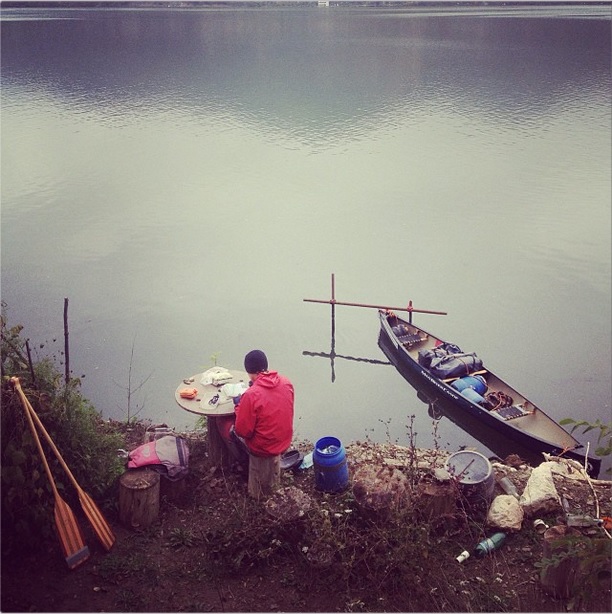This week the power of nature and the mighty Danube river came to the fore as we canoed through dramatic scenery in equally dramatic weather.
We left Belgrade bound for the Bulgarian border but as we began the river started to slow and the wind picked up, blowing in our faces. By the end of the first three days we were already well behind our planned itinerary and realised the week would be a long one.
This, however, was only the start and it was the middle of the week where the wind was at its worse. We entered the Danube Gorge where the river is harnessed by two hydro-electric dams, built in a joint project between Romania and former Yugoslavia. Here the water backs up into a giant lake spreading between the mountains. The wide body of water became unsettled by the wind, funnelled through the high peaks, and we found ourselves being hurtled around in high waves.
After a scary morning in which the churning water tried to throw us against a cliff or two, we spent a few hours walking and hauling the canoe before finding slightly calmer water. The next day we headed into similar problems and by lunchtime the weather was so bad that the afternoon was spent waiting for the storm to clear and assessing our walking options.
It was not until the next morning that we were able to canoe again, nervy from the bad weather we had struggled through. But the same water that had drowned our boat as we hurriedly unloaded it on a beach, that had carried us dangerously close to where it pounded cliff faces and that had trapped us for an afternoon with no paddling, also carved our surrounding scenery and it was truly spectacular.
With full knowledge of how powerful the water could be, we paddled the next few days through the cut gorge with its craggy outcrops and high cliffs. The artificial lake means the water is unnaturally high and at times paddling through the peaks felt like moving through the sky. We passed through the narrowest point, 150m between sheer cliffs, past Manastirea din Valea Dunarii, a tiny convent isolated amongst the mountains. We faced Decebalus Rex, a 40m tall face carved into the cliff and we glided on water as unbelievably still as it had been wavey just days before.
Our journey out of the gorge was marked by humanity rather than natural forces. First we had the two hydro-electric dams to get around. While the dams limit the water’s power, they presented massive obstacles for us. At the first dam the Serbian border control didn’t want to know and waved us towards the Romanian bank. Here, after much gesturing and shrugging, the Romanian lock-keepers ushered us into the lock to accompany a cruise-liner on its 30m drop to the new river level.
After another day and a half’s paddling we reached our second dam. Here we managed to unload our gear and began portaging the canoe around the lock on the Serbian side. At this point we were confronted by a combination of dam security, border control and police who were eventually convinced that our passports and documents were, in fact, adequate. From there, after more gesturing, passport-presenting and form-filling we checked out of Serbia and her ports and over to Bulgaria.
While these last two days of marshy lowlands weren’t naturally epic, crossing into Bulgaria was a strong end to a long week.
For more detailed updates you can follow our progress @CanoeingEurope on Twitter and read our regular blogs at www.canoeingthecontinent.com.



















